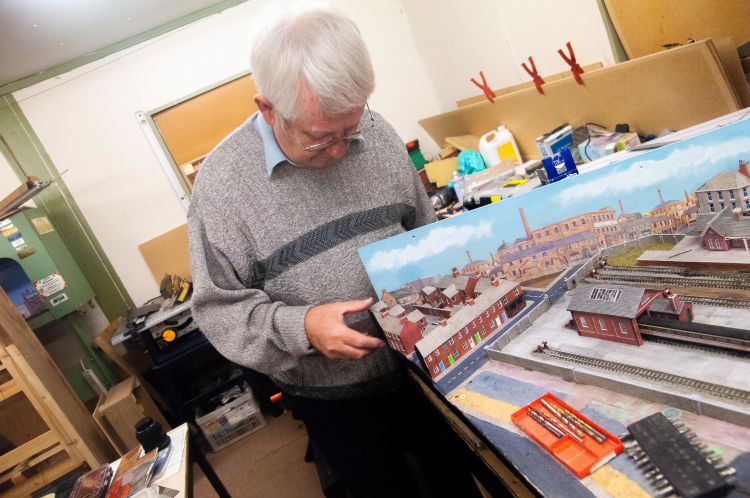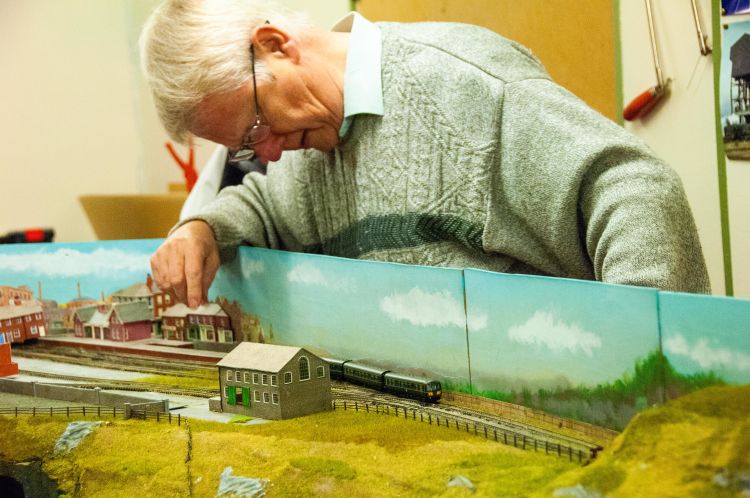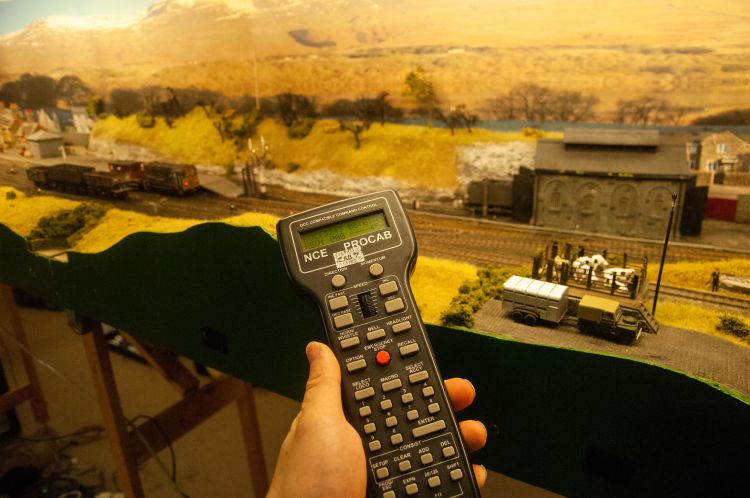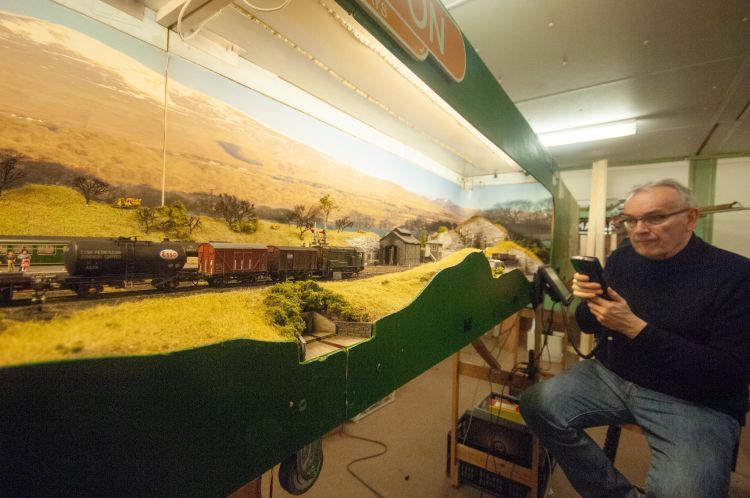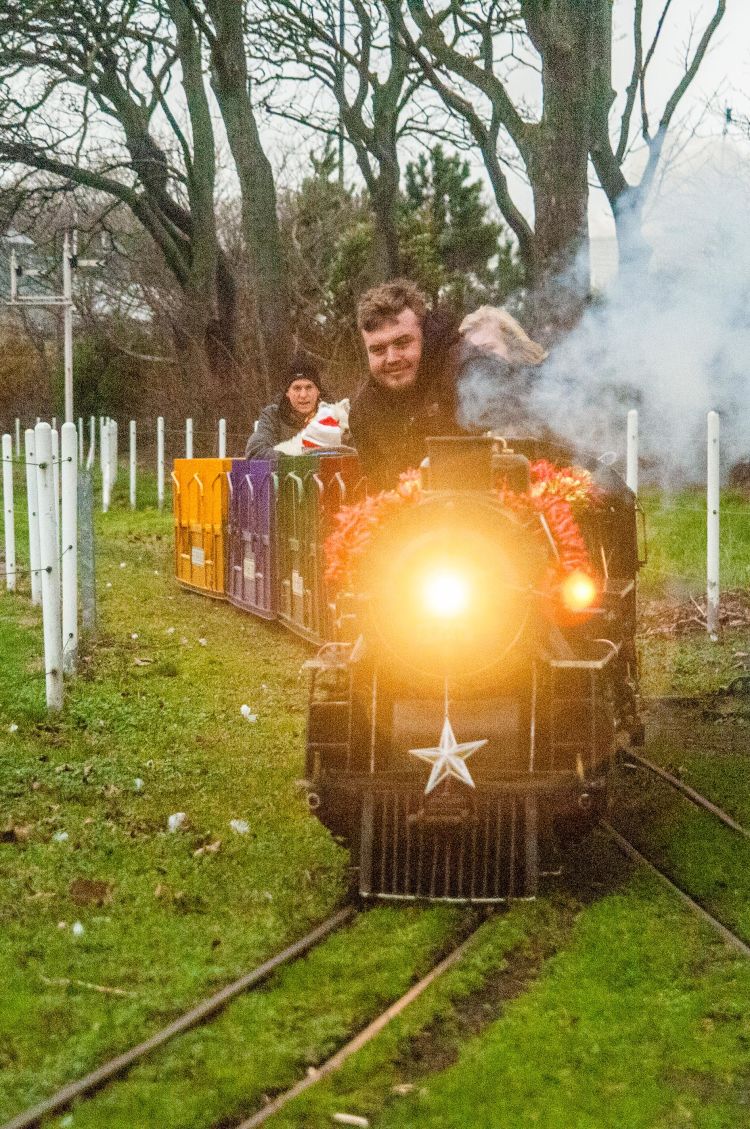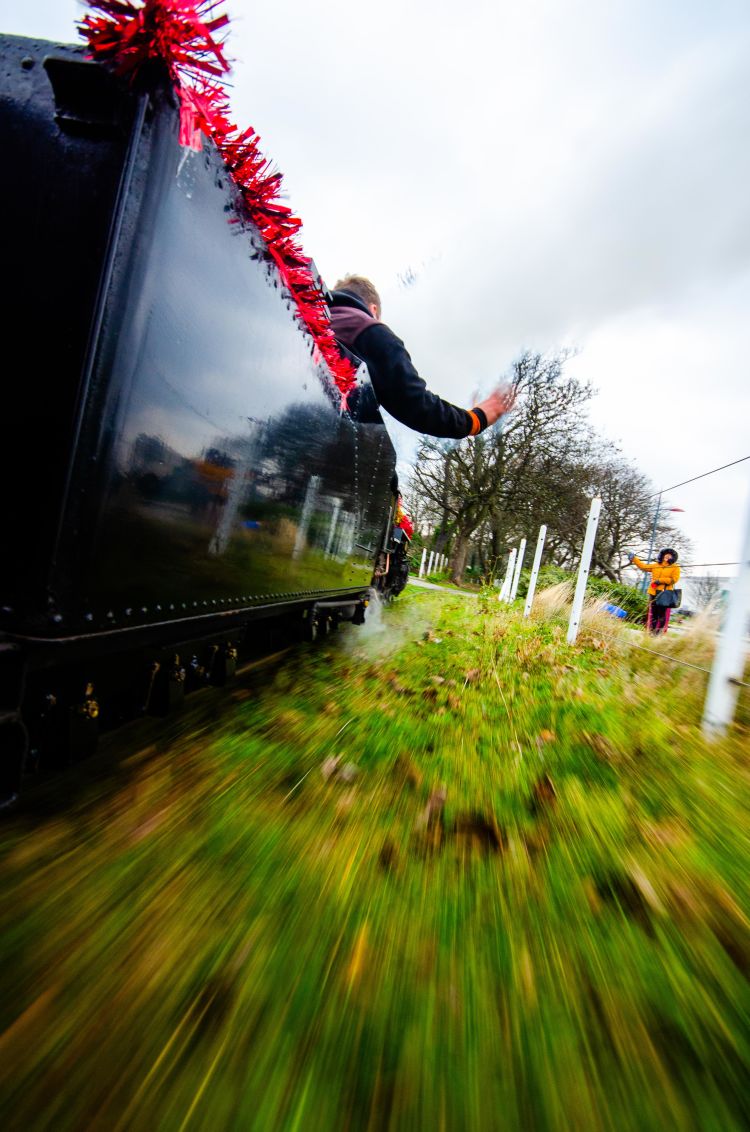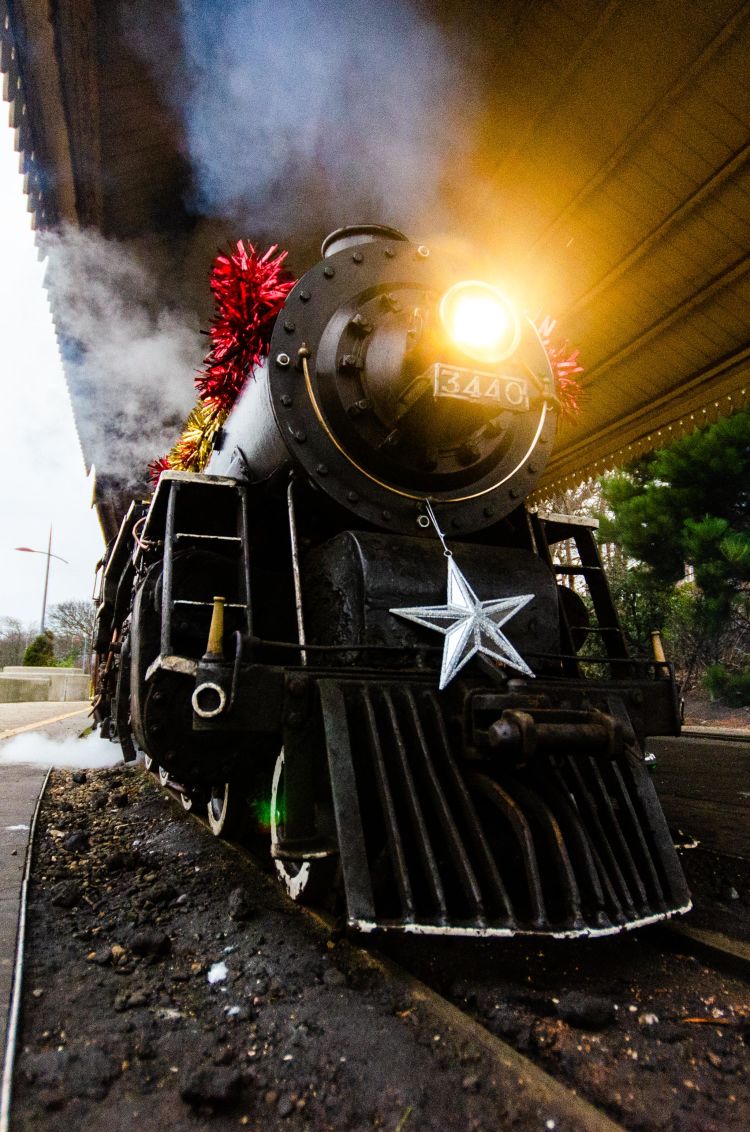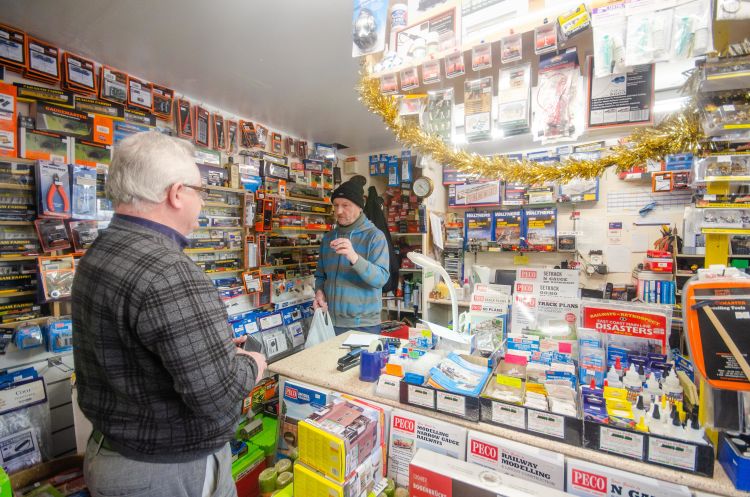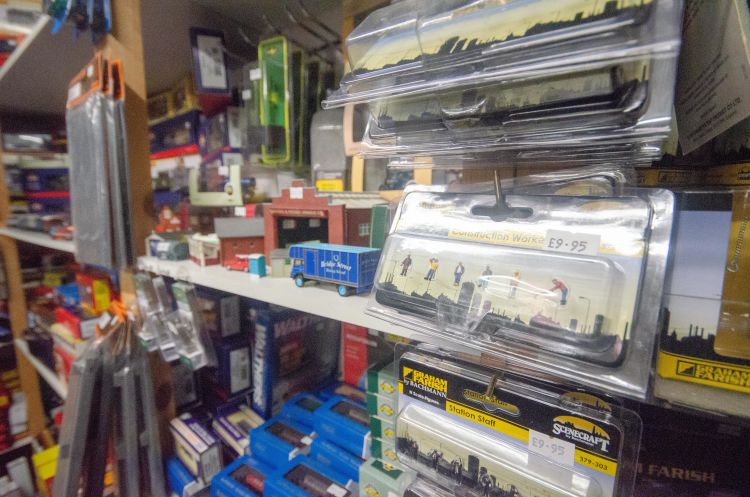Big Men, Tiny Trains
A story of model railways and their drivers
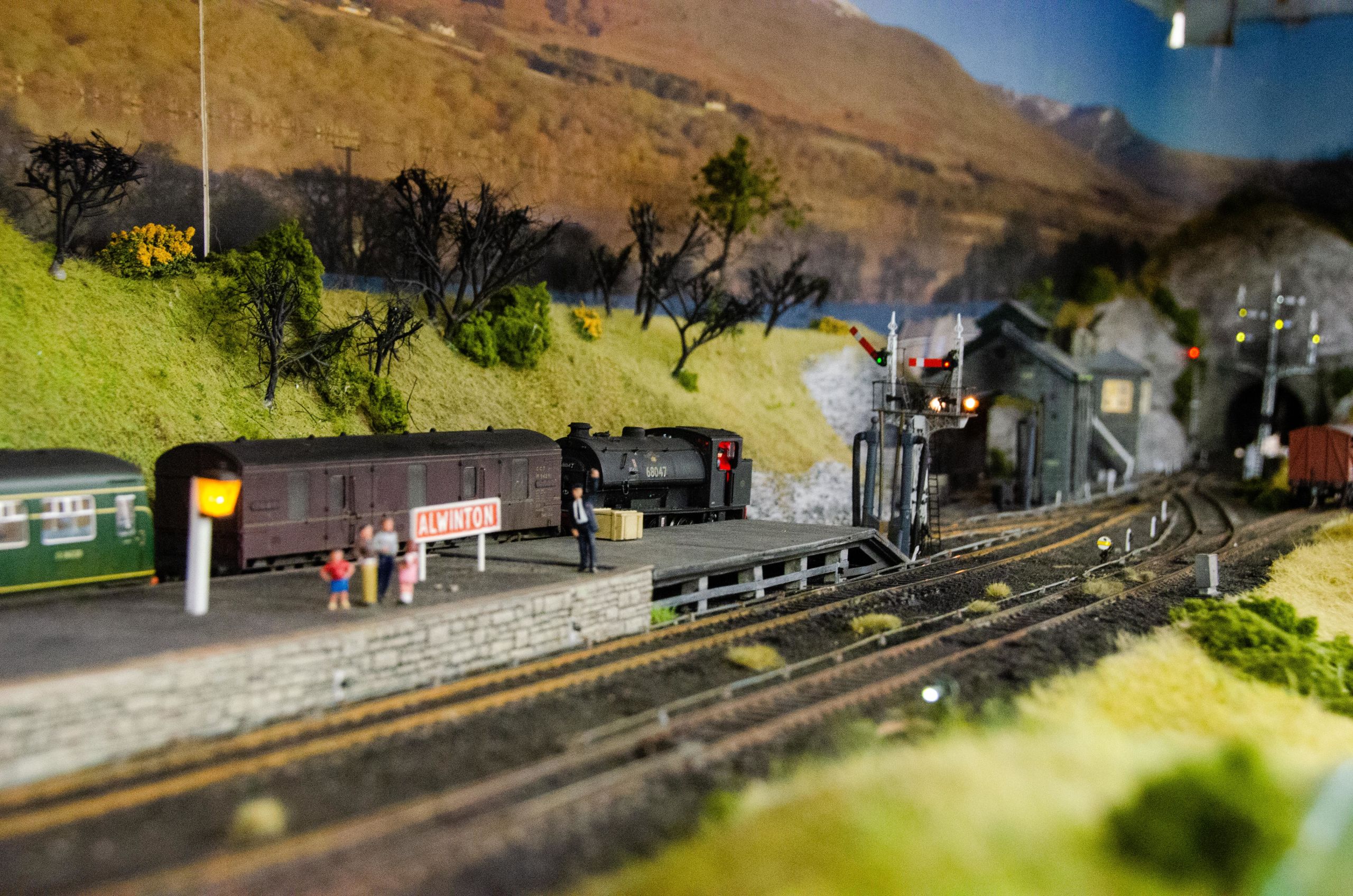
Ever since George Stephenson’s Rocket ran in the 1829, children around the world have been playing with model railways and toy trains.
Its usually started on a Christmas morning when little children unwrap their first train set. Most children move onto other hobbies in life, but once a while, the trains stay on. From the first model railway set to massive computer controlled layouts, enthusiasts have been "playing with trains".
At the A19 model railway club, members gather twice a week to work on their layouts to prepare them for model railway fairs.
For Phillip Metcalfe, the railways were always going to be a part of his life. His father worked on the London and North Eastern Railway until he retired right before the start of British Rail. Growing up along the line-side watching great steam engines of the day passing over the largest railway crossing in the world in Newcastle.
He now works on an “N” gauge railway depicting 1960s-1970s British Rail with a North-East theme. He chose this era so as to showcase what he remembers of the pre-privatization era. Almost everything on the layout is built by hand and customised to accurately reflect the North-East.
Model railways don't always need to showcase big routes, the star of the show here is "Alwinton", a village in 1960s Northumberland built by former British Rail driver Tony Lambert and the late Mike Scott.
This era was chosen so that a wide variety of rolling stock can be used as it showcases the end of the steam era and the start of dieselisation.
Tony said: "Model railways teach many practical skills that can be applied out of the hobby such as electrical wiring and carpentry and with the modern systems, computer programming."
Due to the small size of some of the parts to build a model railway, model railway would seem to also aid one's fine-motor-skills. It can be noted that some wires that needed to be welded were around the thickness of a human hair.
Railway modeling isn't always able to fit in one's garage, sometimes modelers end up with larger railways that actually run on steam.
We bring you to the Lakeshore Railroad in South Shields, opened in 1972 and now a major local attraction. Originally run by volunteers, but with the amount of traffic, it has now turned into a full-time job for most of them. 21 year old Liam Reays has been coming here since he was 11 and this has morphed into a full time job for him.
The Lakeshore Railroad is considered to be on the larger end of model railways due to its 9.5in gauge.
They currently operate with two engines, the South American style "Adelia" and the North American style "Mountaineer".
"Mountaineer" was the first locomotive to arrive on the railway and is almost fully hand-built by W.L. Jennings.
Liam Reays said: "It's a lot different from driving big engines as when you open the regulator, off you go. Whereas with the big engines you need to wait 5-10seconds for the engine to respond."
"People usually think, at the end of summer, thats you done for the year. The days are alot shorter, but you're working a lot harder. People don't understand the amount of behind-the-scenes work we actually do. Its alot more expensive to do all the maintenance."
According to Ryan Lamb, the railway's operational manager, staff usually have to come in an hour or two before the first passenger train is run so light the fire and heat the engine.
It is necessary to slowly heat the engine so that the metal does not expand too quickly which can result in a boiler explosion. As such, railway staff need to be very careful when raising an engine's fire.
There is however another side of railway modeling that is often overlooked.
David Poole of Pooleys Puffers has been in business since 1996. He used to be a train driver with British Rail and has spent a lifetime in the railways.
In spite of these challenges, David has managed to keep tabs on all his customers individual needs and what they've ordered off by heart.
He said: "It's good, but it does get a little busy sometimes."
It's not always smooth sailing.
"It does take its toll, I tell everyone I'm here till 10'o'clock Christmas Eve night and then I'm closing . Thats it, I'm not staying any later. Last year was 11'o'clock, and I'm not doing it this year."
One challenge is competing with a growing online on-demand industry where clients want everything laid out in-front of them when they want it, and as a one-man operation he's struggling to keep up with larger companies.
This has led to customers asking him to remain open on Christmas Day itself just so they can do extra shopping.
David added: "They expect me to be open 24hours a day. I get asked to be open on Christmas Day quite regularly."
Railway modeling generally has a stigma that its a hobby for only the elderly, but as time goes on, the younger generation is slowly starting to get into the hobby.
David Poole says he sees more and more young people coming in for the modern digital command and control train sets and the Lakeshore Railroad is seeing more young volunteers coming to help and learn about railways and engineering.
In spite of the losses Hornby is facing and the cutbacks they've had to take, its safe to say that model railways are coming back and people in the industry can start to see the light at the end of the tunnel.

